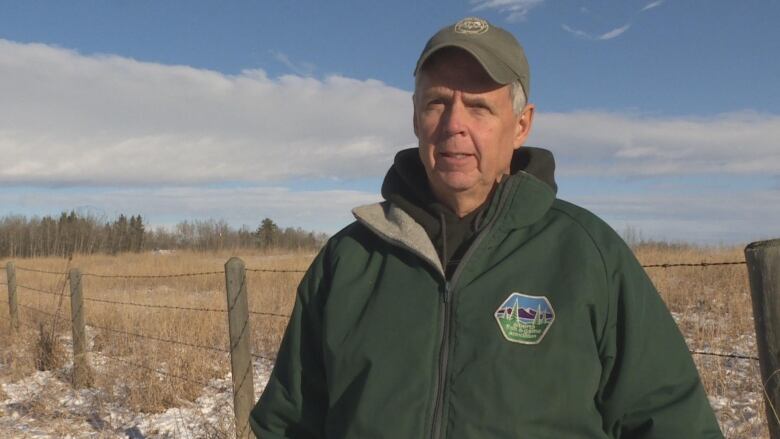How 560 kilometres of tweaked fences is helping save Alberta's pronghorn
Some simple changes to fencing help a once nearly extinct species avoid predators and illness
A conservation project that spans hundreds of kilometres across southern Alberta is giving a species that was once almost extinct a leg up or rather, a leg under.
The Alberta Fish and Game Association and the Alberta Conservation Association have wrapped up another season with their Pronghorn Corridor Enhancement Project changes to fencing that helpspronghorn stay healthier and less vulnerable to predators.
Pronghornare a horned, deer-like mammalcommonlycalled "antelope," although they're technically not part of the antelope family. They wereonce abundant across the grasslands of North America,but came close to extinction until large sections of their habitats were protected by conservation efforts. In Canada, they can now be foundin southwestern Saskatchewan and southeastern Alberta.
Pronghorn are the second-fastest land animal in the world, next to the cheetah, and are capable of racing at speeds of50 to 70 kilometres per hour over long distances.
But they're not good at leaping the fences that now crisscrossthe prairies.

While pronghorn are physically able to jump fences, they prefer to travel under them, according to Paul Jones, senior biologist at Alberta Conservation Association.
"We had an image of a pronghorn that had all its hair removed off the back and it had scarring that looked like frostbite. And we started questioning, well, 'What was that from?'" said Jones.
"We quickly realized that it was from traversing a landscape that's full of fences."
When pronghornsqueeze under fences, they can lose hair which in the winter can lead to disease and frostbite.
Predators, like coyotes, can also use the fences as a way to prey on pronghorn, Jones said.
560 km of fencing customized to help pronghorn so far
So the two conservation groups decidedto find a way to help.
They have been working with landowners to replace the bottom strands of barbed wire fences with smooth wire and raise them up by 46 centimetres.
Together, the two groups have completed about 560 kilometres of fence adjustmentson public and private land since 2009.
This year, fencing was adjusted around Orion,south of Medicine Hat, and near Writing-on-Stone Provincial Park.

"Pronghorn are an icon species for the prairies and they're also only found here in North America. So having the ability to be able to move across the landscape is going to ensure their persistence on this landscape," Jones said.
Landowners originally skeptical but now queueup
The majority of the project is driven by volunteers and support from landowners who agreed to have the work done on their properties.
"They were skeptical in the beginning and we ended up working with a couple of really large landowners," said T.J. Schwanky, wildlife projects facilitator for theAlberta Fish and Game Association.
"We couldn't do it without landowner buy-in. I mean, they graciously let us on their land to do this project. Without them, there's no way it would happen. But if we hadn't proved ourselves, they would have never bought on either."
Schwanky said there's now a waiting list of landowners who would like to participate in the program.













_(720p).jpg)


 OFFICIAL HD MUSIC VIDEO.jpg)
.jpg)



























































































